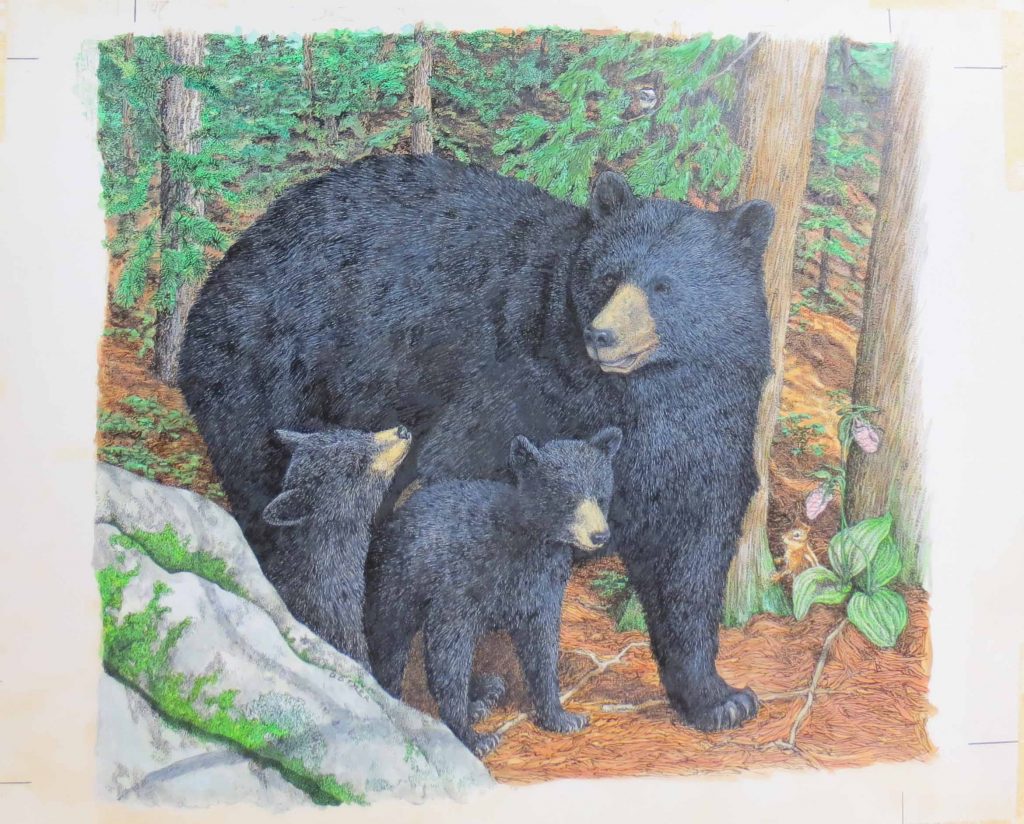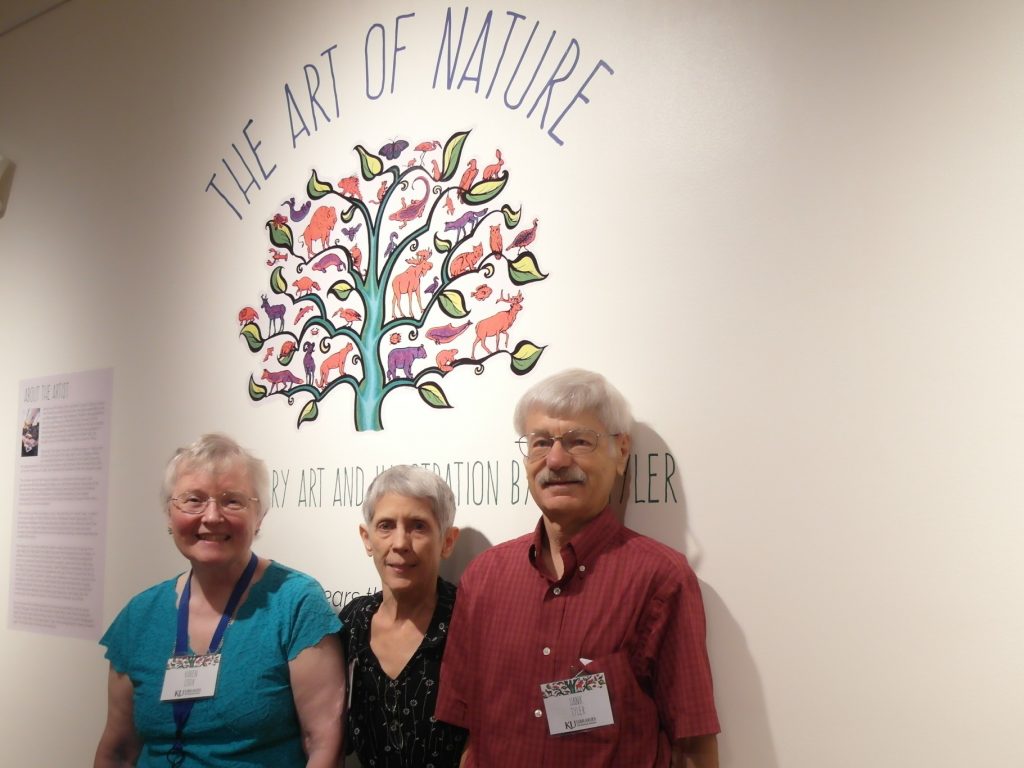The Art of Nature
July 31st, 2018Just how heavy is an African elephant? What insects hang out together on milkweed plants? Satisfy your curiosity by visiting Kenneth Spencer Research Library’s summer 2018 exhibition before it closes on August 30.
D.D. Tyler. “One African Elephant Is as Heavy as…” t-shirt and
“Milkweed Village” t-shirt. D. D. Tyler Collection.
Call Number: MS QA 22, Box 4. Click images to enlarge.
The pictorial T-shirts displayed in “The Art of Nature: Natural History Art and Illustrations by D.D. Tyler” answer such questions in the nicest possible way. These beautiful T-shirts selected from nearly 200 designed by natural-history artist D.D. (Diana Dee) Tyler charm the eye while they stimulate the mind. The same is true of her natural-history illustrations for periodicals, guidebooks, and children’s books.

D.D. Tyler. Mother Bear and Cubs. Color drawing for book
Bears in the Wild by Ada and Frank Graham, 1981.
Addition to the D. D. Tyler Collection received 12/17/2017. Click image to enlarge.
The detailed and scientifically accurate pen-and-ink drawings breathe life into each book author’s written descriptions of animals and their lives. In the exhibition, her impressive original drawings, never meant to be seen, can be compared with the published versions reduced photographically to half-size.
D.D. Tyler. Mother Squirrel Carrying Baby Squirrel. Ink and crayon drawing
for book We Watch Squirrels by Ada and Frank Graham, 1985.
D. D. Tyler Collection. Call Number: MS QA 22, Box 1, Folder 30. Click image to enlarge.
A native Kansan, D.D. Tyler completed a Fine Arts degree at the University of Kansas in 1970. After backpacking around the world, she settled in Maine, where her career as an artist developed in tandem with her interest in the natural world. Now semi-retired, she recently donated her artistic archive representing forty years of work to Kenneth Spencer Research Library, where anyone using our reading room can request and view items from the D.D. Tyler collection, along with the many other books and manuscripts in the library’s collections. Kenneth Spencer Research Library, located in the central KU Campus on Poplar Lane between Strong Hall and the Campanile, is open Mondays-Fridays 9-5 and (after fall semester classes begin August 20) Saturdays 9-1.
The artist, D.D. Tyler (center), and her husband, Hank Tyler (right), at the exhibition
with Karen Cook (left), curator of the exhibition. Click image to enlarge.
Karen Severud Cook
Special Collections Librarian





